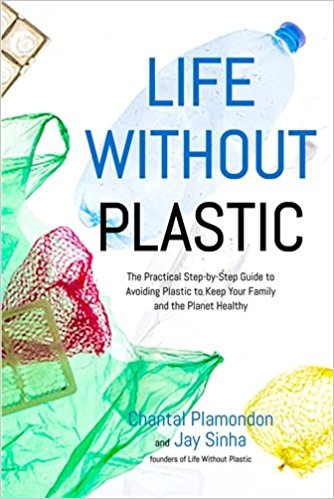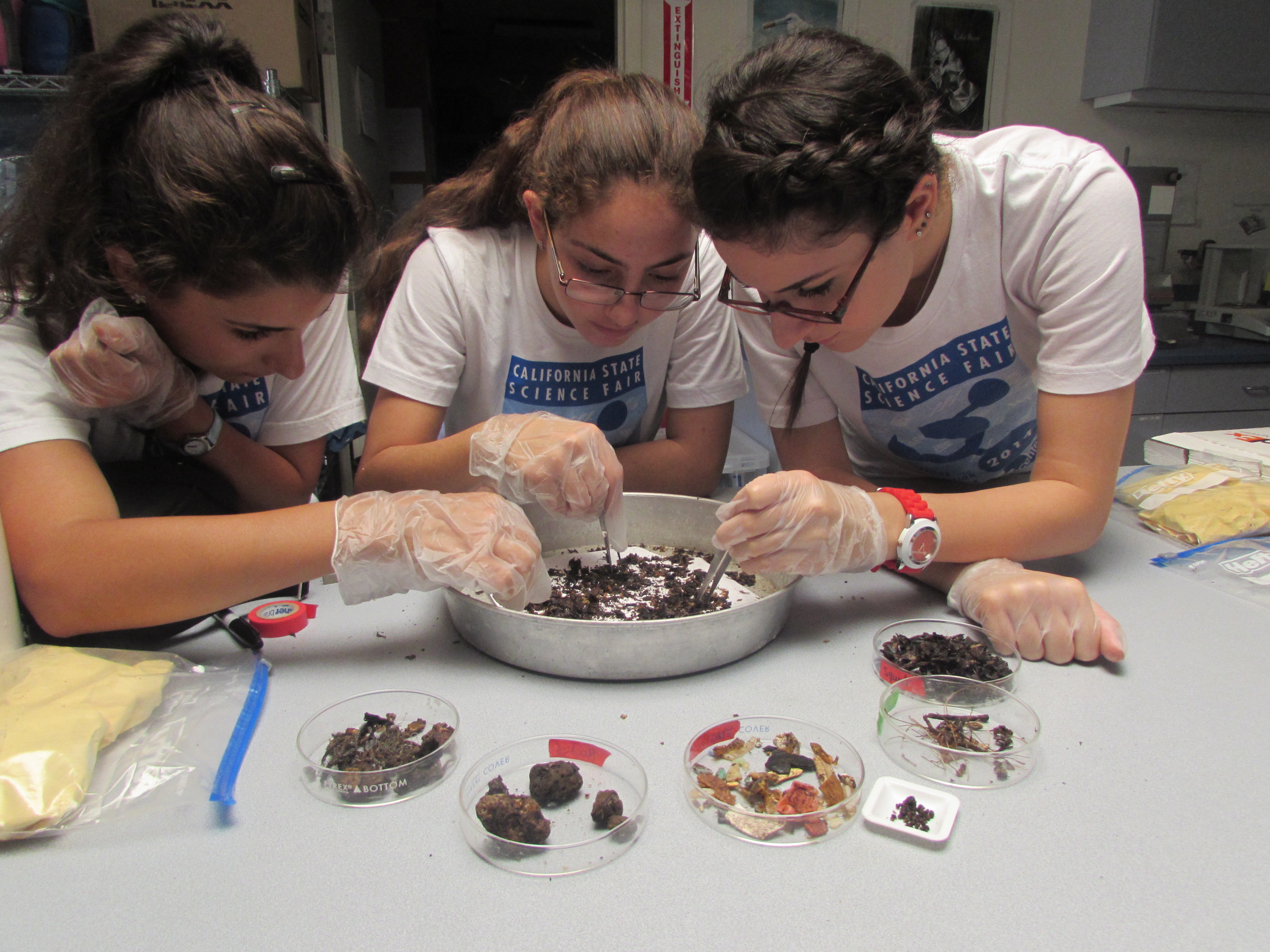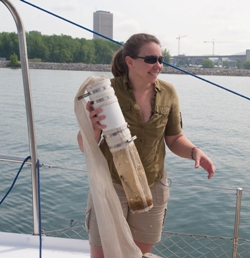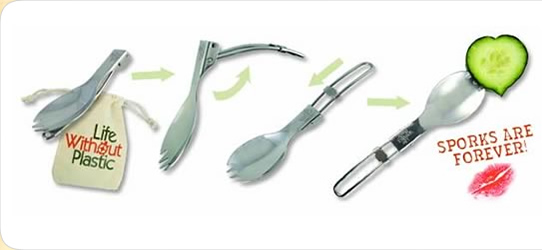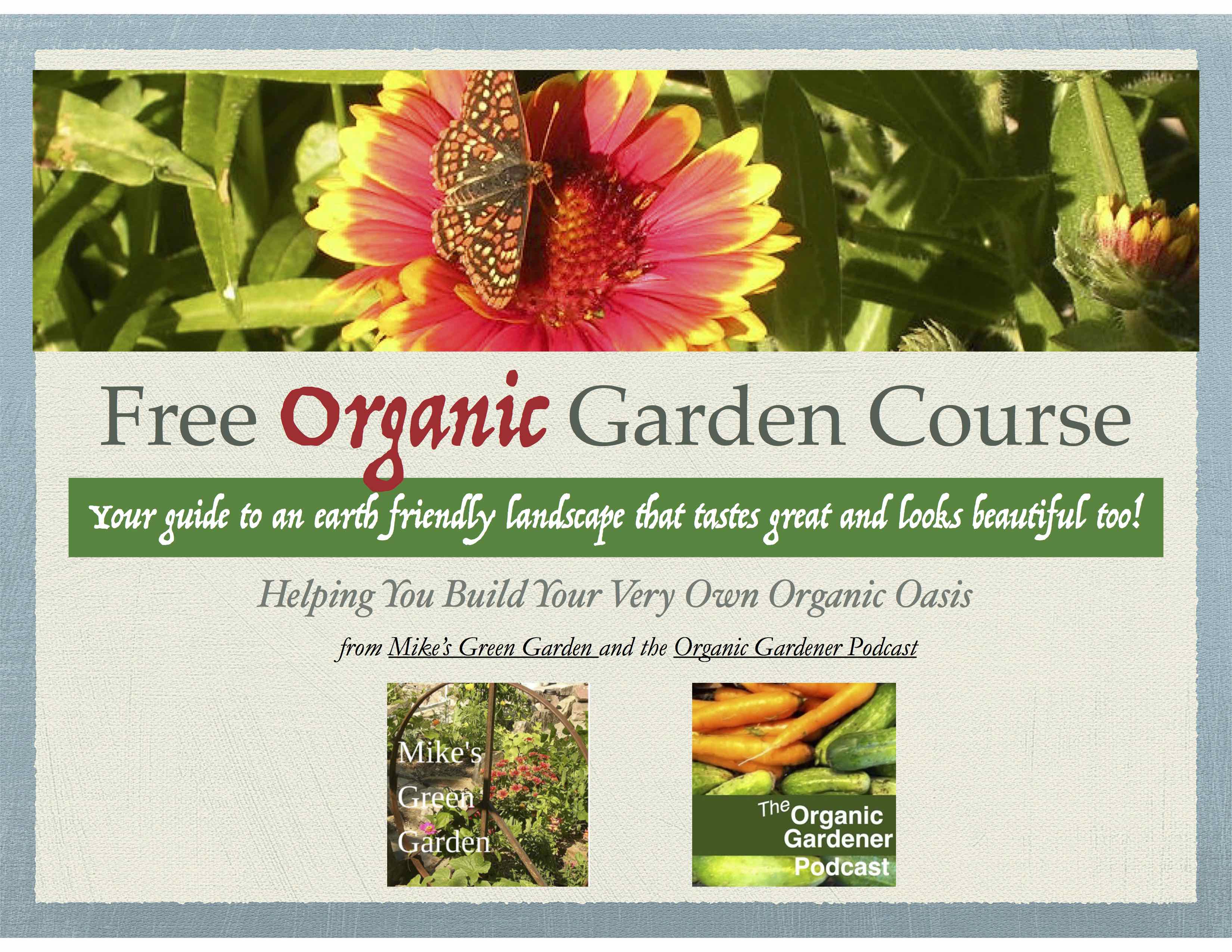230. Life Without Plastics | Jay Sinha | Quebec, Canada
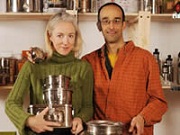
I was saving this for the Fourth of July It seemed like a great Independence day episode and then it didn’t quite get done but close!
Chantal Plamondon and Jay Sinha
Life Without Plastic: The Practical Step-by-Step Guide to Avoiding Plastic to Keep Your Family and the Planet Health
Tell us a little about yourself.
I have kind of a mixed background
- law
- science
- biochemistry
- ecotoxicology
wife Chantal Plamondon
she has a background in law as well with business and ethics
Our story goes back several years, starts with our son who was born in 2003.
We were quite eco minded and environmentally friendly in the way we lived. When he was born we took it to a new level, we had some mold in the place that we were living and we got sick for about a year. As a result we became
- more environmentally friendly
- decrease our toxic load all around
- exposure to toxins in our everyday life.
Chantal read this great article on plastics and the chemicals that come out of plastics!
That was kind of news to us, we were doing what we thought was the eco friendly.
We would use the bottle and wash it and use it over and over
Those bottles are intended for single use, not intended to be used over and over
break down
single use disposable
chemicals
started to look for a non plastic bottle
it was very hard to find! Back in 2003.
There wasn’t that much out there, but we found a coop
they were making stainless steel bottles
tried it out
so when our son was born we wanted to buy some glass baby bottles
avoid plastics
- still needed to store milk
- didn’t want to be boiling plastic bottles
- high temps are hard on the plastic
- didn’t want to expose our son to plastic.
We looked for glass baby bottles
They used to be the norm!
at that point in the early 2000s hard to find
did find a company that was making them
contacted them to buy some glass baby bottles but the minimum order was a 1000
Chantal always wanted to start her own business
wanted to do something environmental
offering alternatives
knew there were others out there looking for them
started with those products
glass water bottles
stainless steel food containers to replace tupperware
lots of tupperware and we would use it over and over
if you put a tupperware container
microwave it
over time you’ll find it might become a little red or orange can’t wash it off
That’s because the spaghetti sauce which is kind of oily, when it’s subjected to a lot of heat, it goes into the plastic so then some of the plastic is coming out into the spaghetti sauce.
The chemicals that we now know can disrupt the hormones in humans
began with these stainless steel
put up the website
- started selling these things but also
- educating about the whole plastics issue
It really took off!
The Canadian government back in 2007 decided to ban the use of BPA it’s a chemical that is used in plastic called polycarbonate which was used to make a lot of baby bottle and water bottles.
It’s still used in those huge plastic water dispensers in offices!
It’s also used to make epoxy that lines canned food. Pretty much all canned food there are a few examples now, but most still have lining made of BPA
strange but very widespread is those very thin cash register receipts
ink on them
So if you are touching the ink then it goes directly into your skin
tid bit
antibacterial agent in it will actually increase the absorption of BPA from cash register receipt. So when the Canadian government banned that really put a lot more interest of people looking for alternatives to plastic and baby bottles and the lining of baby formula containers.
That got people more and more interested to finding an alternative and we happened to be there at the right time and place. That really gave a boost to our business.
We went more broadly. We were finding alternative plastics that would minimize contact with food and drink
- non plastic brushes
- non plastic shaving products
- not plastic bags
sort of things
one stop shop for alternatives to plastic
That’s sort of our initial story!
I’m so bummed I didn’t catch the pre-chat, I was talking about having made a new years resolution. My good friend Dacia, has a business where she makes home made aprons and soaps and she’s been really getting into wildcrafting. Last year she made a resolution to eliminate plastic from her life because she has 2 kids too and she wants to keep them away from.
So I’m trying this year, and my students keep asking me why are you using a quart mason jar. I talked to this young girl who was a scientist she said that it was the bacteria I couldn’t get out when I cleaned it that would hurt me. But that could have bene a while ago, maybe plastic has changed since then too. It’s so flimsy. I also followed this Food Babe diet, she says you should get up and have lemon with cayenne pepper every day, but that works for me with a canning jar.
I wanted to say I think i found you because you were on Facebook, you went on a trip, where they were scuba diving and there was a two mile wide thing of ocean.
In Bali there’s a wildlife photographer who filmed plastic underwater. It’s just stunning.
It’s literally exploding as governments take notice and NGOs, and people.
As part of that plan they are trying to reduce the use of avoidable plastics. Single use plastic by 2042 completely. The European Union has a plan as well.
Large packaging.
Also they were shipping a lot of the plastic waste to China, came into affect in January they are no longer accept plastics and other waste and this is applying to Canada and US. Ramping up recycling infrastructure.
Our focus is on reducing plastic comsumption
changing individual behavior habits
It’s a question of habits. You said yourself, it’s
second use bottles
just a after of chaining the mindset
Instead have a dispenser at home
bottle few bottles
- glass
- stainless steel
get in the habit of using those
Also don’t be afraid of tap water
tap is tested regularly
bottled water is not tested the same
Many people don’t know a lot of bottled water is tap water that has likely been through a reverse osmosis
not regulated
most tap water is
unless there are known problems in a certain community
Like Flint
Well that’s what I was thinking because of the gas there it’s not drinkable.
In terms with reducing the plastic around the world it starts with individual behavior. The waste that comes from this packaging
- ends up in the oceans
- on land too
but the oceans are like a giant sink.
Things that go in the landfill may go up in the air
waterways
waste that comes from ships
cruise ships
rivers that come from
straight into the oceans
issue
tons of research thats being done by scientific researchers and some NGOs
Algalita Research and Education Dr. Charles Moore
He was sailing from Hawaii across to California to Long Beach where he’s based and he was stunned to see there were islands of plastic just floating there. There’s a lot of visable plastic but for the first 6 inches there’s like all thse microplastics in this area in the North Pacific becae to be known as the Great Pacific Plastic Patch.
When the plastics go into the water they break down quite quickly into tinier pieces of plastic.
pollution
wildlife are eating this plastic
- fish
- seabirds
- even!
- plankton
explain that
plankton tiny tiny organisms that produce water and oxygen. They are at the base of the oceanic and global food chain. We found the plankton are preferentially eating plastic over their normal food.
They’ve tagged pieces of micro plastic with a florescent tag and they can see the plastic going into the plankton and they get
- eaten by small fish
- then eaten by larger fish
- sea birds
- larger mammals
- whales
- sharks and dolphins
right up the food chain
They’re finding whales that are dying in quite large numbers because their stomachs are full of plastic and they can not digest real food their intestines are clogged and they basically starve
can not take in actual food
in terms of larger global issue
50% of oxygen in world
digesting plastic
serious issue
all of us humans as well
apart from the part
as these plastics go up
concentrated more
fat tissues
fish and birds
fish in particular are eaten by humans eventually
As the plastics are in the ocean they actually absorb, attach to outside things like
- fertilizers
- pesticides
- heavy food metals
go into fish, birds, oil, concentrated up the food chain
When you’re eating fish theres a good change there could be a concentration of chemicals that are making it into that fish.
This is another issue looked at by researchers and why our governments on board and
- international issue
- oceanic plastic pollution
- widespread
There’s basically a layer around the world
of plastics on land as well
most recently found in drinking water and bottled water!
Just this last week (recorded on March 17th 2018) study gone viral
done by a commissioned by a journalism organization
Professor Dr Sherry Mason
University of Fredonia
top researchers
259 different samples of bottle water from 11 different brands purchased in 9 different countries
Found 93% of those 259 samples had plastics in them!
These micro plastics
- bottles
- caps
are made out of the caps.
- data
- plastics just from use of bottle
- screw on off the cap
I was just thinking that might be a good segue into your website and book!
Life Without Plastic: The Practical Step-by-Step Guide to Avoiding Plastic to Keep Your Family and the Planet Health
launched back in December
how to guide
decrease your plastic use
chapter 2
plastic free living approach
Pareto principle
80/20 rule that basically
says that about effects come from 80 of causes
get rid of 20% of the plastics in your life your impact is probably closer to the 80% because they are the core of the problem
Examples and Solutions!
It begins with a question of behavior and habit change
so easy now to find non plastic bags
or durable heavy duty plastic bags you can use over and over again! As compared to ones you only use once.
Cloth bags
You just bring them with you
- fold up really small
- organic cotton ones
- super durable
- wash them periodically
any bag should be washed periodically to eliminate bacteria
smaller bag
smaller mesh
producers like fruit and vegetables
cotton bags
- flour
- oatmeal
- things like that
habits
having them nearby and making it easier for yourself to use them
plastic water bottle
We truly believe at this point everybody should have a non plastic water bottle you cary with you
purse
carabiner – click it to your backpack
fill it up where ever you go
going to school fill it there
Another one that is easy and should be standard issue in any plastic free kit
MUG!
steel or ceramic
don’t have to take disposable cups are generally lined with plastic
mostly paper cups lined with the plastic that can’t be recycled and end up landing into a landfill
Can I ask you about that? I always have a cup, but it has a plastic lid.
Can get some that have stainless steel word
plastic called polypropelene
#5
symbols
more stable plastic
because its the cap it’s not in as in direct contact with the rest of the beverage. It’s not ideal but definitely much better then using a cup that has one of those plastic lids.
Usually made of plastic polystyrene
#6
want to avoid
styrene
not a good chemical can leach styrene
get to be putting in your body
polystyrene not recycled as much
You know what I realized when I was in NY a few years ago, people in NY in suits and stuff just don’t carry things. They don’t have backpacks, some do, but most people just don’t have things.
You’re gonna see it more and more. It might be a bit difficult in the beginning but it just takes some planning.
utensils
go for take out
fork knife or spoon
gonna use them for a matter of minutes
most are not recycled
9% that go into the waste stream actually gets recycled
replace utensils
sporks
combine spoon and fork to make a spork that folds
so easy
we use them all the time
glove compartment
don’t get taken away by security on planes
love them!
Straws
people who use straws
made out of plastic
- wood
- bamboo
- straws are an enormous problem in the world.
people are becoming aware of this.
Approximately 500,000 million straws each day
- just in the states
- discarded in the US alone
- put that in perspective
1.6 straws per person per day
175 billion every year
That doesn’t even include the straws on the little juice boxes
straws
An easy way to avoid them
one have your own
Also, when you go into the restaurant or bar, they automatically give you one but if you indicate to the server before you don’t want a straw they’ll be happy.
If you are in the habit and practices and bars and well
so often you don’t use it but to just stir your ice cubes and drink directly from the glass anyway and then it just goes straight into the landfill
stainless steel straws
get little brush, the ones we sell come with a brush.
They’re very easy to clean
- bamboo
- how long will it last
- cared for
- cleaned regularly
can last for months and years
super durable
glass straws give life time guarantees so if it does break you can get a free one
don’t want to be smashing it against a stone wall but they are very durable even for children.
I don’t understand it, the grocery bags are more convenient they’re so much stronger and the plastic bags you have to use so many. My friend Dacia has started making those mesh ones that she uses. I’ve seen on Facebook some foldable material people are putting things in.
options out there now easy to come by
There’s a new choice that eliminates the use of plastic wrap
saran plastic
awful plastic
unstable plastic
chemical BPA
another class of chemicals that are endocrine obstructors
hormonal
55% of plastic
softener
plasticizer
plastic wraps are very very pliable and flexible
When you put one of those wraps on a hot dish and you have condensation falling back into the food. One replacement is usually an organic cotton coated in beeswax
spread on top of a bowl with warmth of your hands it will stick to the bowl
- fish
- meat or cheese
- snacks
- lunches
- easy to carry
want to clean with cold water
if you use them with hot water they take off the bees wax
Using them for years, clean with soapy water
One of our staples
love them once the use them and incorporate them into daily life.
We should talk about how this relates how this relates to our garden.
absolutely
Theres a section in our book about how to keep plastic out of the garden.
garden tools
- non plastic tools
- shovels
- hoes
soil
it depends on the scale of the garden
It’s pretty hard to avoid it coming in those plastic bags
much more heavy duty quite thick to use them for garbage etc.
order soil in bulk
The pots and planters you get small seedlings in that becomes a bit harder
accumulated a lot of those
The planters
are usually made out of polly properalyne
can be recycled and reused
small trays
small seedlings
polystyrenes
can be come very brittle not that recyclable
One way to avoid those is to create your own seedlings using a soil blocker
Soil Blockers
Soil blockers are the cookie cutter of gardening
eliminate the need for a tray or plastic container
- thin
- wear and tear
- crumble
cheap polyethylene
talks about
easily tear
crumble
Let me explain it a little better becasue I remember when she talked about it I was like what are you talking about. You plant a big tray of dirt, and then you take the blocker like a cookie cutter, it’s not until you plant the seedling, it takes the dirt out, so you never need that plastic container.
soil blocker
creates cubes of
final layer of soil on the top
leaves a whole where you put the seed in
put a layer
in all the compartments that you have made
We do have friends we live in a rural area who have used them with great success
I think the other benefit is the roots grow straight down because there is no cup.
I did want to ask you about that, Anastaisa Cole Plakias talks a lot about the importance of making a profit, there’s probably someone interested in the business side because I have a lot of green future growers and people who are intersted in buildng a profiable business as compared to a non-profit.
core element there
meet a need that you yourself to need
scratching your own itch
something your passionate about
In terms of gardening there are all sorts of things there especially a master gardener.
key
something
build it in the way where you’re trying find a little niche
find if there is something out there already based on what you want to do
Find an angle or aspect that hasn’t been dealt with before or in a way that hasn’t been out there before or a twist on an old idea
one example
what we do looking for new products
not new
given them a new twist
ice cube tray
made out of plastic or silicone
back in the 60s they were made out of aluminum
metal tray and a mold you put in that cuts them really cleanly.
It’s kind of like the soil blocker now that you say that!
popsicle mold
made ones out of stainless steel as well
Things like that, going back in time
mason jar
it’s been around for ages and ages, an old tool but giving it a new twists
eco jars
specializes in lids for drinking
- making coffee
- filtering coffee
new ways to use mason jar
little ideas can go a really long little way
broad health issues, decrease pollution in lives
Garden area and food production in general
research in small square farming all over the world
In the area we live there are many small organic farms by Millennials who are kind of fed up with food system.
lifewithoutplastic.com
products
LWP blog: http://www.LifeWithoutPlastic.com/store/blog
LWP twitter: http://twitter.com/LifeWoutPlastic
LWP facebook: http://www.facebook.com/LifeWithoutPlastic
LWP google+: http://plus.google.com/+Lifewithoutplastic
LWP pinterest: http://www.pinterest.com/LifeWoutPlastic/
LWP instagram: http://instagram.com/LifeWithoutPlastic
Sign up for our fun plastic-free e-mail newsletter for coupons, savings, info, action!
Inscrivez pour notre bulletin éléctronique amusant et sans plastique pour des rabais, info, action!
Life Without Plastic: The Practical Step-by-Step Guide to Avoiding Plastic to Keep Your Family and the Planet Healthy – launched on December 12th, 2017 and is available wherever books are sold.
The Organic Gardener Podcast is a participant in the Amazon Services LLC Associates Program, an affiliate advertising program designed to provide a means for sites to earn advertising fees by advertising and linking to amazon.com
If you like what you heard on the Organic Gardener Podcast we’d love it if you’d give us review and hopefully a 5 star rating on iTunes so other gardeners can find us and listen to. Just click on the link here.
and don’t forget if you need help getting started check out our new
Free Garden Course.com
Remember you can get the 2018 Garden Journal and Data Keeper to record your garden goals in
You can download the first 30 days here while you’re waiting for it to come in the mail.
We’d love if you’d join Organic Gardener Podcast Facebook Community!
If you like what you heard on the Organic Gardener Podcast we’d love it if you’d give us review and hopefully a 5 star rating on iTunes so other gardeners can find us and listen to. Just click on the link here.

